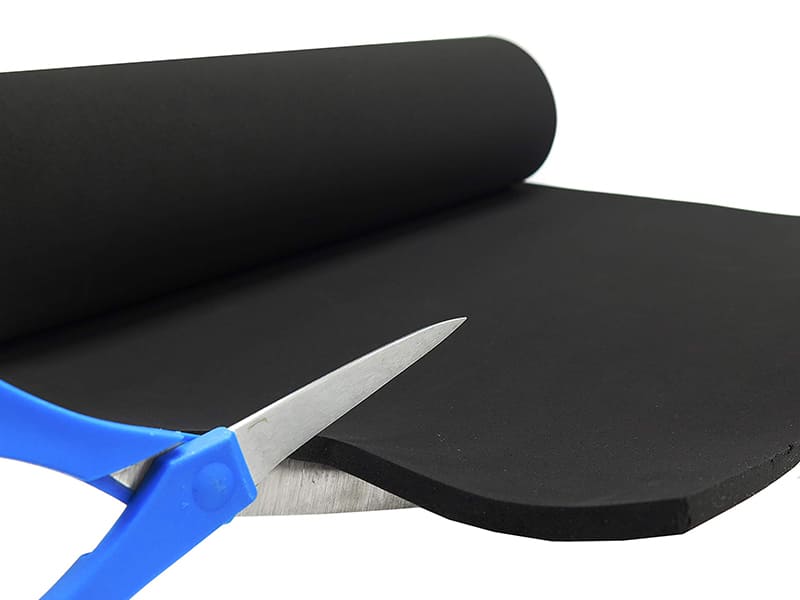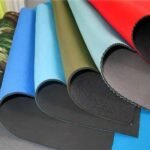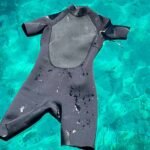Neoprene is a versatile material used in a wide range of products, from wetsuits to industrial gaskets. Its durability is one of its most valued features, but like any material, neoprene has its limits. How long it lasts depends on several factors, including usage, storage conditions, and environmental exposure. For businesses and individuals relying on neoprene products, understanding these factors is key to maximizing their lifespan.
Neoprene typically lasts several years under normal use, maintaining its flexibility, water resistance, and strength. However, its longevity can vary depending on how it’s used, stored, and maintained.
To fully understand how long neoprene lasts and how to extend its lifespan, let’s explore its properties and the factors that influence its durability.
Does Neoprene Wear Out?
Neoprene is renowned for its durability, but it isn’t indestructible. Over time, repeated use and environmental factors can cause wear and tear.
Yes, neoprene wears out eventually. Signs of wear include cracking, loss of elasticity, and reduced waterproofing. The rate at which neoprene deteriorates depends on usage intensity and exposure to harsh conditions like UV light, saltwater, and extreme temperatures. Learn more about the effects of UV light on neoprene.
Common Signs of Wear
- Cracking: Prolonged exposure to sunlight or harsh chemicals can cause neoprene to crack.
- Stiffness: Loss of elasticity due to aging or improper storage reduces its flexibility.
- Peeling layers: In laminated neoprene products, the outer layer may separate over time.
| Cause of Wear | Effect on Neoprene |
|---|---|
| UV exposure | Cracking and surface deterioration |
| Chemical exposure | Loss of elasticity and flexibility |
| Repeated compression | Permanent flattening and loss of shape |
While neoprene wears out, proper care can delay this process significantly, ensuring longer product use.
Does Neoprene Age Well?
Aging is inevitable for any material, but neoprene holds up better than many others due to its synthetic composition.
Neoprene ages well when stored and used under optimal conditions. It retains its key properties—flexibility, waterproofing, and insulation—for years, but improper handling can accelerate aging. For tips on maintaining neoprene, visit how to clean and maintain neoprene.
How Aging Affects Neoprene
- Oxidation: Exposure to oxygen over time can cause neoprene to harden.
- UV Light: Prolonged sunlight exposure speeds up degradation, leading to cracking and discoloration.
- Humidity: Excessive moisture fosters mold growth, which damages the material.
Neoprene’s aging process can be slowed down by limiting its exposure to these damaging elements. By understanding how it reacts to aging factors, you can better protect your products.
How Long Does Neoprene Last in Storage?
Neoprene’s lifespan is often determined by how it’s stored when not in use. Proper storage practices can preserve its integrity for extended periods.
Neoprene can last up to 10 years or more in storage if kept in a cool, dry place away from direct sunlight and harsh chemicals. However, improper storage conditions can shorten this duration significantly.
Best Practices for Storing Neoprene
- Temperature Control: Store neoprene in a climate-controlled environment with temperatures between 10°C and 25°C (50°F to 77°F).
- Avoid UV Exposure: Use opaque storage containers or bags to protect against sunlight.
- Dry Environment: Ensure storage spaces are free from excessive humidity to prevent mold growth.
| Storage Factor | Recommended Practice |
|---|---|
| Temperature | Maintain moderate, stable levels |
| Light | Avoid direct sunlight |
| Humidity | Use dehumidifiers in storage areas |
Adhering to these guidelines ensures that neoprene products maintain their functionality even after years in storage.
What Factors Affect the Durability of Neoprene?
Several factors influence how long neoprene lasts, making it important to understand what affects its durability.
Factors like environmental conditions, usage frequency, exposure to chemicals, and maintenance practices play a major role in determining neoprene’s lifespan.
Key Influencing Factors
- UV Light: Sunlight is the biggest enemy of neoprene. It breaks down the material’s structure over time.
- Chemical Exposure: Solvents, oils, and harsh detergents degrade neoprene quickly.
- Friction and Stretching: Repeated mechanical stress weakens the material, especially in high-use areas.
- Temperature Extremes: Prolonged exposure to high or freezing temperatures can cause neoprene to lose flexibility or become brittle.
| Factor | Impact on Durability |
|---|---|
| Sunlight | Speeds up cracking and fading |
| Chemicals | Reduces elasticity and strength |
| Mechanical Stress | Causes thinning and holes |
| Temperature Extremes | Leads to brittleness |
By minimizing exposure to these factors, you can maximize the lifespan of your neoprene products.
How to Preserve Neoprene?
Preserving neoprene requires proactive care and regular maintenance. Proper handling can significantly extend its usability.
To preserve neoprene, clean it regularly, dry it thoroughly after use, avoid harsh chemicals, and store it properly. Regular inspections can also help identify and fix minor issues before they escalate. Check out this guide on how to repair neoprene products for quick fixes.
Practical Tips for Neoprene Care
- Cleaning: Rinse with freshwater after each use, especially if exposed to saltwater or chlorine. Use mild detergents designed for neoprene.
- Drying: Hang the product in a shaded, well-ventilated area. Avoid using direct heat sources like hairdryers or radiators.
- Storage: Store flat or loosely rolled to avoid creases and maintain shape.
Step-by-Step Care Guide
- Rinse Immediately: After every use, rinse neoprene with clean water to remove residues.
- Use Gentle Detergents: For deeper cleaning, use neoprene-specific solutions.
- Inspect Regularly: Check for signs of wear like cracks or peeling and repair promptly.
- Avoid Compression: Don’t stack heavy items on neoprene products during storage.
By following these care guidelines, you ensure that your neoprene items remain functional and aesthetically appealing for years.
Conclusion
Neoprene is a durable and versatile material that, when properly maintained, can last for many years. While it does wear out and age over time, factors like proper storage, regular cleaning, and limited exposure to harmful elements can significantly extend its lifespan. Understanding the key factors that affect neoprene’s durability helps you make informed decisions about care and use.
At Szoneier, we specialize in manufacturing high-quality neoprene products tailored to your needs. Whether you’re a brand owner, wholesaler, or retailer, our customizable neoprene solutions combine durability with innovative design. Contact us today to learn how we can help you create products that last and enhance your brand’s reputation.











